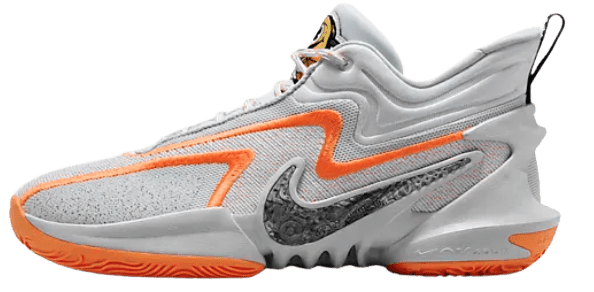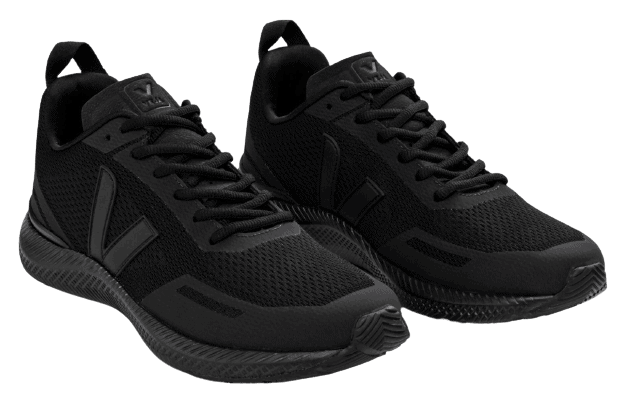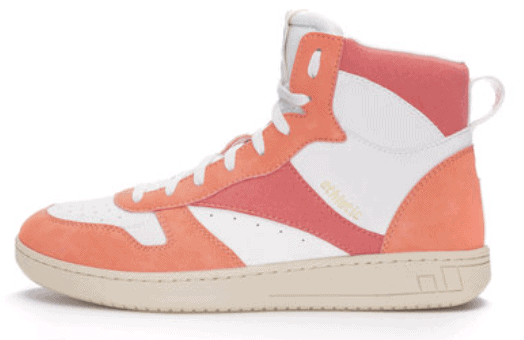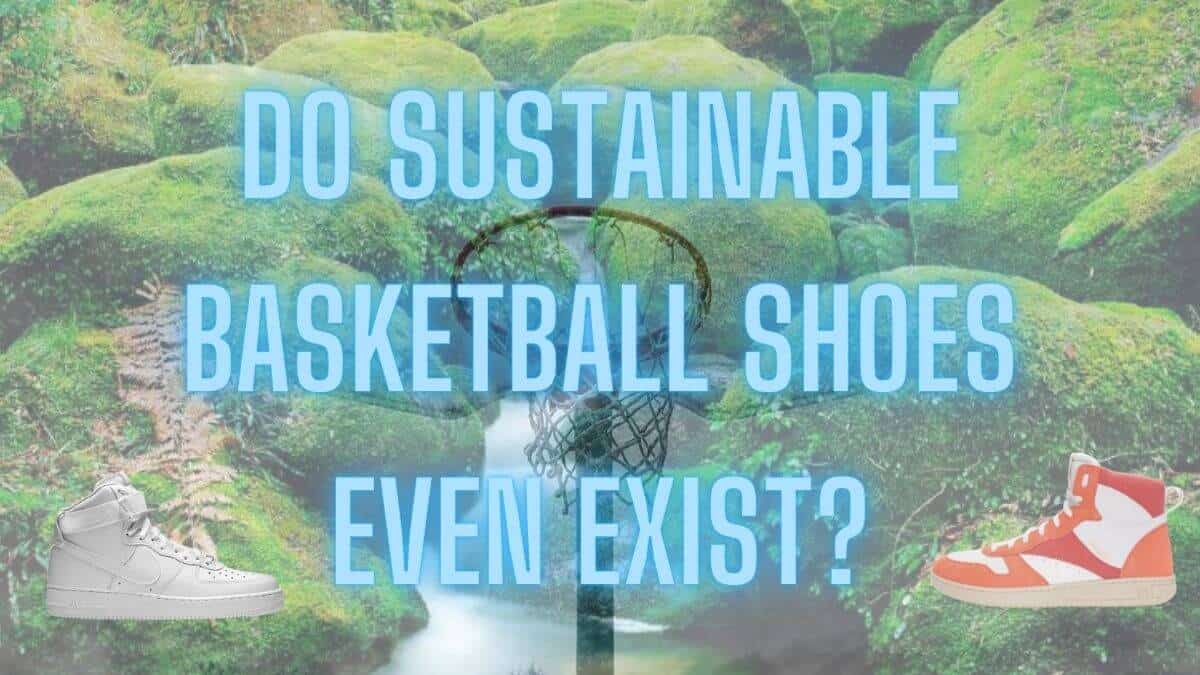When you make a purchase through links on this post, we may earn a commission through Amazon or other retailers. Learn more about our affiliate disclaimer.
If you just want the ordered list of the most sustainable basketball shoes available today, click here. For some more detail on how they were selected, read on.
It would be nice to find some ethical and sustainable basketball shoes. I mean, they kinda exist. It’s complicated…
See, I was born in a “developed” nation. I drive a car sometimes. I eat bananas on occasion. My existence is so deeply entwined in capitalist exploitation that worrying about sneaker sustainability is a privilege in itself.
Still, if I can make a purchase that signifies a desire in the market for a basketball shoe that won’t take up space in a landfill and wasn’t built under unsafe and torturous working conditions, that seems reasonable.
So I’ve been searching for years now. And the unfortunate truth is that no, there aren’t really ethical or sustainable basketball shoes available. None that meet both the demands of the truly committed hooper as well as those of the concerned modern citizen.
But there are some interesting options to look into, opportunities to at least reduce the negative impact of your footwear choices. In this post we’ll pont you towards all of the best options on the market today. Along the way, we’re also gonna dig deep into the materials, supply chain, and manufacturing environments of some of the worlds biggest shoe producers.
We’ll call out the products you want to avoid and some of the better options in terms of making an informed choice in basketball footwear. But we’re going to be realistic about things. This isn’t a perfect world but we shouldn’t let that discourage us from seeking a path towards a future less bleak.
What does a sustainable basketball shoe even look like?
Ideally your shoes would be made out of biodegradable materials by a true craftsman with a great salary and full benefits, who genuinely enjoys their work and is also a dedicated hooper. They’d be delivered to your door by bicycle in reusable packaging. And they would be lightweight, high-performance, and fly AF.
And they’d be affordable. I mean, if you’re willing to put some cash behind your concerns for the world, I commend you. But we all have our limits.
Let’s break down these qualities to make it a little easier to hunt around for the models that get closest to this idealized model.
Materials
We’re searching for a basketball shoe that has a high percentage of recyclable or biodegradable materials. So we’ll have to look into the traditional shoe materials and determine which are most sustainable.
But we also need to look at the source of some of these materials. Products like leather and rubber, while not necessarily destructive, have proven problematic in the past.
Production
We want a shoe that is minimally exploitative. If my shoes are made in a factory that does nothing but vacuum up resources in a struggling community, that’s pretty sucky.
This can get a little complex and political. Wages are the popular indicator of an exploitative production system. But they’re not always the best indicator, so it’s important to consider a broader representation of a worker’s quality of life.
Distribution
This one is easily overlooked, but the path a product travels is probably worth examining. For the most part, basketball shoes are shipped out of Vietnam on massive boats. The total impact divided across thousands of pairs is pretty minimal, but there may be some cases where the impact is better or worse than average.
The main concerns with basketball shoe sustainability
Now that we know what we’re looking for, let’s take a look at some of the common failures. It would take a lot more than a blog post to really dig into the details on every brand out there, but we can at least touch on the basics.
Where are basketball shoes made?
The vast majority of basketball shoes are made in Asia, but particularly China and Vietnam. There are several shoe manufacturers that do produce in the US and some are making an effort to bring more of their manufacturing to the US. US production is usually more expensive, but working conditions are better.
I don’t want to make excuses. But working in any kind of factory sucks. In fact, working usually sucks. but it’s really difficult to identify what makes a factory ethical. A factory job in china may ask you to work ridiculous hours, but it also might allow you to buy a home and pull your family up into the middle class.
Still, US factories will enforce a minimum wage, regulate safe working conditions, and provide some level of benefit system. A US factory is far less likely to put the same stresses on their workers that you might find in other parts of the world.
Manufacturers are increasingly placing emphasis on maintaining factory standards, regardless of factory location. What that actually means gets a little murky. But this ends up looking better for the bigger companies. Larger companies get the most scrutiny, and lifting standards encourages the other manufacturers to keep up. This is one of the reasons Nike may not be the worst choice in terms of sustainability.
As far as US manufacturing though, New Balance is the leader. They claim 70% of their shoes are manufacture in the US. And they make some great basketball shoes. Reebok runs a large plant in Michigan where a large percentage of their shoes are assembled. However, parts are mostly sourced from Asia. Under Armour is vocal about their efforts to bring production stateside, but they’re still catching up.
Basketball Shoe Materials
Basketball shoes are primarily made of leather, fabric, foam and rubber.
Fabric is probably the least problematic element here as it is often comprised of mostly natural and sustainable materials.
Leather has its issues, obviously. It’s an animal product, and that is a polarizing factor to say the least. But it also tends to come from livestock that are reared on land that was never a great fit for livestock. It’s one thing if you’re harvesting cattle from natural grasslands. More often, it’s coming from rainforest clearcut.
Rubber… Has a terrible history. Today, the leaders in ethical shoe production stress their use of natural rubber over synthetics. While this can reduce their emissions footprints, it’s not without its downsides including predatory production methods and an impact on biodiversity.
There’s an argument to be made that recycled plastics are the most sustainable option for basketball shoes. Foams and plastics have an environmental impact, even when recycled. But at least you’re not claiming materials from an already stressed market, pushing producers to claim more land for rubber production and putting more pressure on rubber producers and rubber producing regions.
Choosing the right materials for a sustainable basketball shoe then is ultimately the choosing of a lesser evil. And that choice has to be personal. Some hoopers can accept leather and rubber as reasonable choices. Others cannot.
The Most Sustainable Basketball Shoes
Here’s the actual list; the meat of this article I suppose. I’ve organized the best options, doing my best to balance impact, cost, availability all at once. But I do put a strong emphasis on availability.
I do want to mention one thing before we get started. Hand-me-downs may just be the most sustainable basketball shoe option available. Whatever impact your sneakers are going to have on the world and the environment has basically already been had once they’ve traveled through that initial commercial circuit.
Plus, if you play mostly outdoors, some of the best outdoor basketball shoes are retro models. Basketball shoes in the US these days are geared almost entirely towards the hardwood. So you might consider just finding yourself a used pair of AF 1’s and getting on with it.
That being said, here are some very hoopable and equally sustainable kicks for your shopping pleasure.
Sustainable Nikes
I wouldn’t be surprised if you were surprised (perhaps even angered) to find the likes of Nike on this list, particularly so high. But these are basically the only shoes with any true claim on being both ‘basketball’ shoes and ‘sustainable’.
Nike is a big ole, successful company. They embody the desires of a large subset of the global population. It’s worth acknowledging their efforts towards sustainability.
Nike has taken some heat for their labor practices. Not to take away from that, but every company on the planet should get heat for their labor practices if you ask me. Larger companies at least can’t afford to let their massive production system fall too far below the norm without it being noticed.
If that’s enough of an argument to get you okay with the labor side, and you’d kinda like to have your modern, meticulously designed basketball shoes, then here’s your answer.

With models like the Cosmic Unity and the Luka 1 “next nature”, Nike commits to using 20% recycled material in production. This alone is not very impressive.
However, consider that purchasing a pair of these shoes signals to the number 1 shoe manufacturer in the world that there is demand for something better. It’s not ideal, but continuing to send a signal to Nike that they need to continue to improve their practices may be the most impactful action you can take.
Veja

While Veja doesn’t make shoes specifically for basketball, they make some trainers that are very close to a basketball shoe design. Check out the Impala or the V-15. The Impala looks particularly court-worthy.
Veja uses primarily natural rubber and ethically-sourced cotton to produce some nice kicks. Materials are sourced in Brazil and the shoes are produced in Brazil in “high-standard” factories. They make some of the more complex and impressive claims of their practices.
In the $160 range, you’re not going completely out on a limb for something that may just not even work for you. There are plenty of models out there pushing into the $300-$500 range that probably won’t work as well on the court.
Etiko

These cats basically produce an ecologically and socially conscious version of the Chuck Taylor All-Star. Now, we’ve come a long way since the Chuck, long enough that I wouldn’t love to play in it anymore. However, people did play in the Chuck for a very long time, and Etiko has put some of their own modern groove on the design.
Etiko is based in Australia. They use 100% vegan, organic, fair trade materials. Plus, they commit to purchasing carbon offset credits to counter their footprint which already falls well below industry standard. This is one ethical shoe, and you can probably hoop in it alright, I guess.
But they’re pretty cool shoes and they make some solid sandals too.
Ethletic

Some impressive models here in the $120 range. Ethletic uses mostly recycled material in their uppers. And their soles are recyclable. So none of this sneaker should take up landfill space when you’re done with it.
They produce several models that have court potential, but the Jesse and the Carl are the most suited to basketball.
The System
This is a fascinating concept. Unfortunately, the shoe itself is basically unattainable.
Constructed by Dennis Johann Miller of Frankfurt as a concept piece, the system is a 3D printed modular basketball shoe. The idea here is that you could make your own shoe with minimal effort and easily swap out the various elements as they wear out.
Takeaways
So it’s not a straightforward decision. You have to figure out what exactly you’re willing to sacrifice here. Do you want a shoe that’s at the cutting edge of basketball safety and performance, or are you willing to risk sacrificing some of that in return for a little more in terms of ethics and sustainability.
I’m constantly revising this and searching for more and better choices, so please let me know what you think and share your own stories or suggestions.
